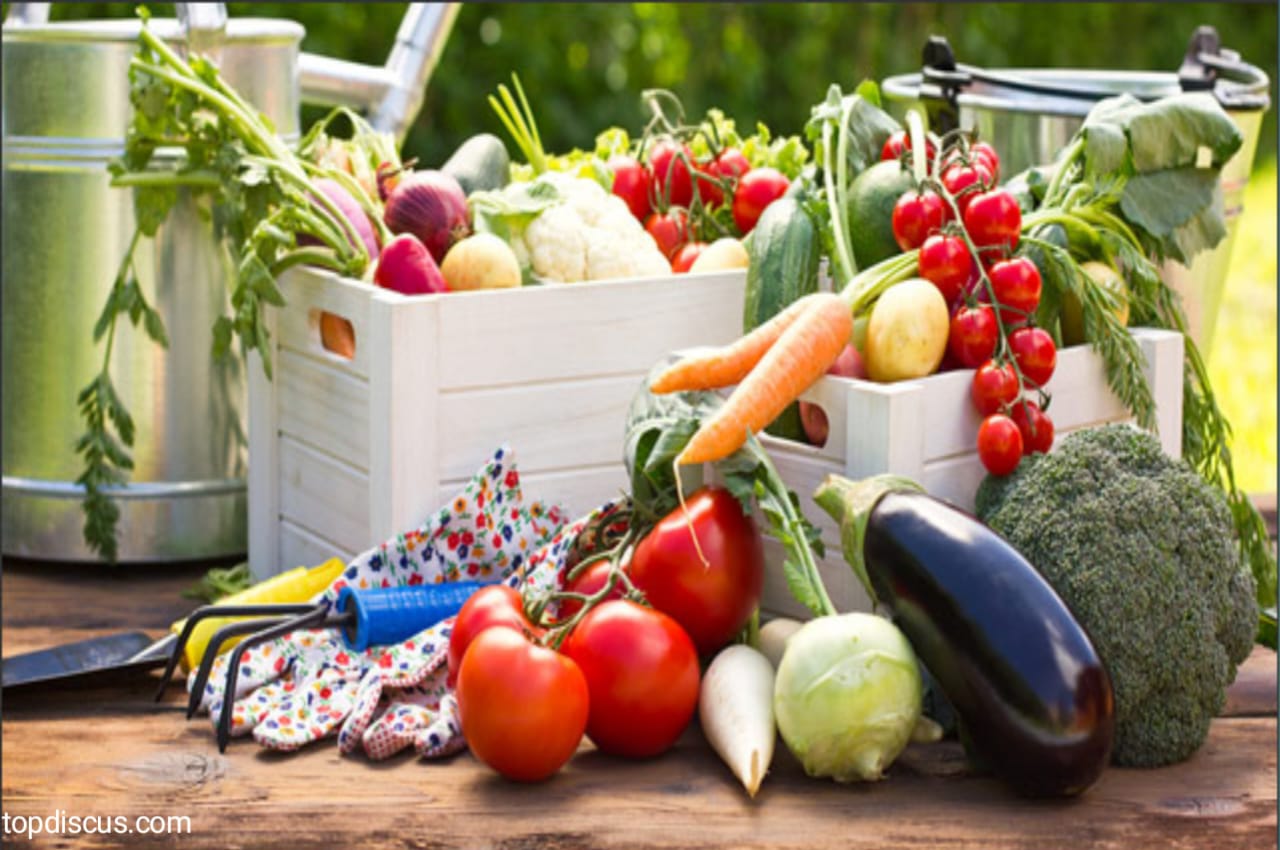5 Vegetables that are Easy to Grow in a Backyard. Welcome to the wonderful world of backyard gardening! There’s something truly magical about growing your vegetables right in the comfort of your own home. Not only does it provide you with a fresh and sustainable food source, but it also allows you to reconnect with nature and experience the joy of watching your plants thrive.
Imagine stepping outside into your backyard, plucking ripe tomatoes off the vine, or harvesting crisp lettuce for a salad straight from your garden. The satisfaction and rewards that come from growing your vegetables are unmatched. Plus, you’ll have peace of mind knowing exactly where your food comes from – no pesticides or harmful chemicals involved!
If you’re new to gardening, don’t worry! We’ve got you covered with this handy guide on choosing the perfect vegetables for your backyard. Whether you have limited space or lack green thumbs, these five easy-to-grow veggies are sure to make even beginners feel like seasoned gardeners. grow in a small space.
So grab your gardening gloves and let’s dig into the world of backyard vegetable gardening together!
Top 5 easy-to-grow Vegetables for Beginners:
When it comes to starting your backyard garden, choosing the right vegetables can make all the difference. As a beginner, you want to start with crops that are easy to grow and maintain. Here are the top 5 vegetables that are perfect for beginners.
-
Tomatoes
-
Lettuce
-
Radishes
-
Green Beans
-
Carrots
1. Tomatoes:
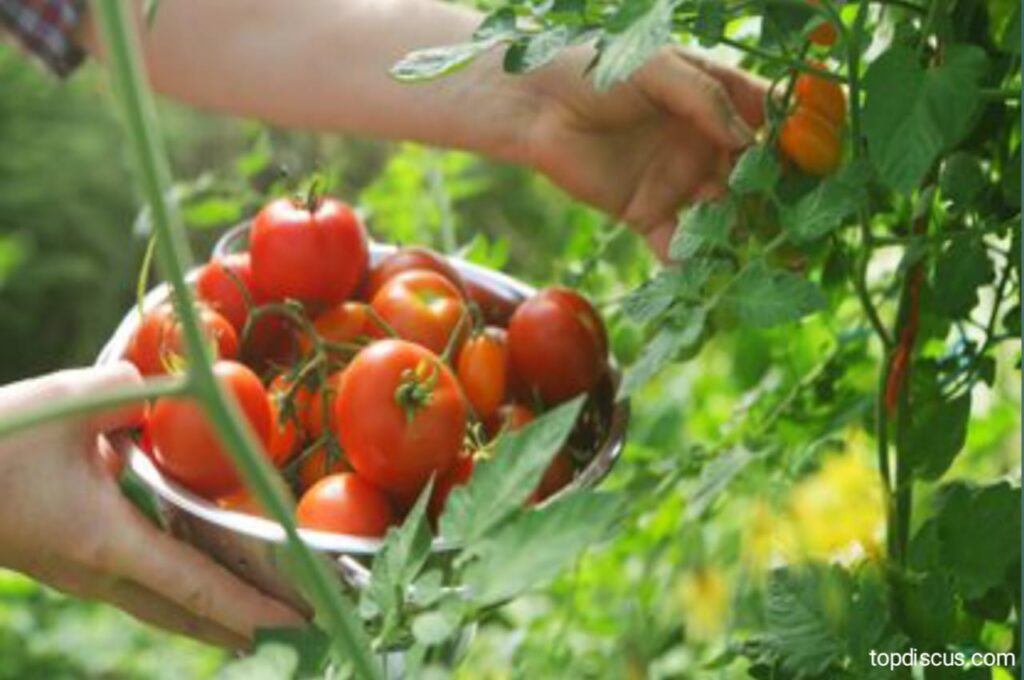 Tomatoes are one of the most popular choices for beginner gardeners. They thrive in warm weather and require minimal care. You can choose from various tomato plants, such as cherry tomatoes or beefsteak tomatoes, depending on your preference. Tomatoes are one of the most popular vegetables to grow in a backyard garden. Start by choosing a sunny spot with well-drained soil. Plant tomato seedlings after the last frost date, ensuring they have enough space to grow and support stakes or cages for proper growth. Regular watering keeps the soil moist but not waterlogged. Fertilize every few weeks with a balanced fertilizer, and prune any excessive foliage for better air circulation.
Tomatoes are one of the most popular choices for beginner gardeners. They thrive in warm weather and require minimal care. You can choose from various tomato plants, such as cherry tomatoes or beefsteak tomatoes, depending on your preference. Tomatoes are one of the most popular vegetables to grow in a backyard garden. Start by choosing a sunny spot with well-drained soil. Plant tomato seedlings after the last frost date, ensuring they have enough space to grow and support stakes or cages for proper growth. Regular watering keeps the soil moist but not waterlogged. Fertilize every few weeks with a balanced fertilizer, and prune any excessive foliage for better air circulation.
2. Lettuce:
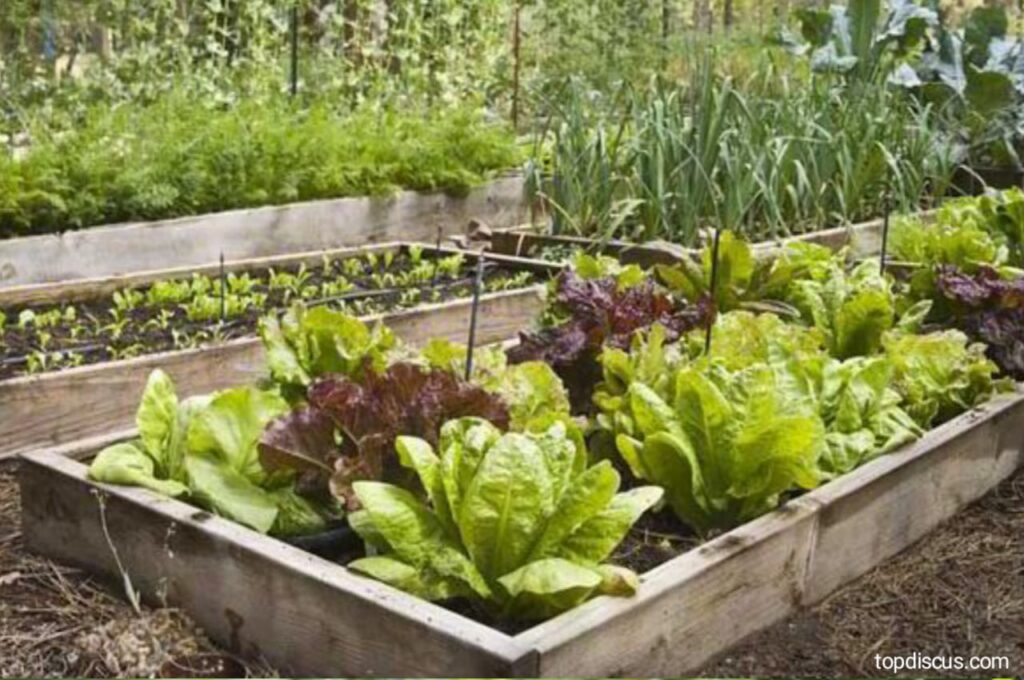 Lettuce is another great vegetable for beginners because it grows quickly and easily. You can sow lettuce seeds directly into the ground or start them indoors and transplant them later. Plus, there are many different types of lettuce to choose from, including romaine, iceberg, and leafy greens. Lettuce is a leafy green that can be easily grown in your backyard. Select a location with partial shade as too much sun can cause it to bolt quickly. Sow lettuce seeds directly into prepared soil, making sure to keep the area consistently moist until germination occurs. Thin out seedlings once they reach around 3 inches tall, leaving adequate spacing between each plant for proper growth.
Lettuce is another great vegetable for beginners because it grows quickly and easily. You can sow lettuce seeds directly into the ground or start them indoors and transplant them later. Plus, there are many different types of lettuce to choose from, including romaine, iceberg, and leafy greens. Lettuce is a leafy green that can be easily grown in your backyard. Select a location with partial shade as too much sun can cause it to bolt quickly. Sow lettuce seeds directly into prepared soil, making sure to keep the area consistently moist until germination occurs. Thin out seedlings once they reach around 3 inches tall, leaving adequate spacing between each plant for proper growth.
3. Radishes:
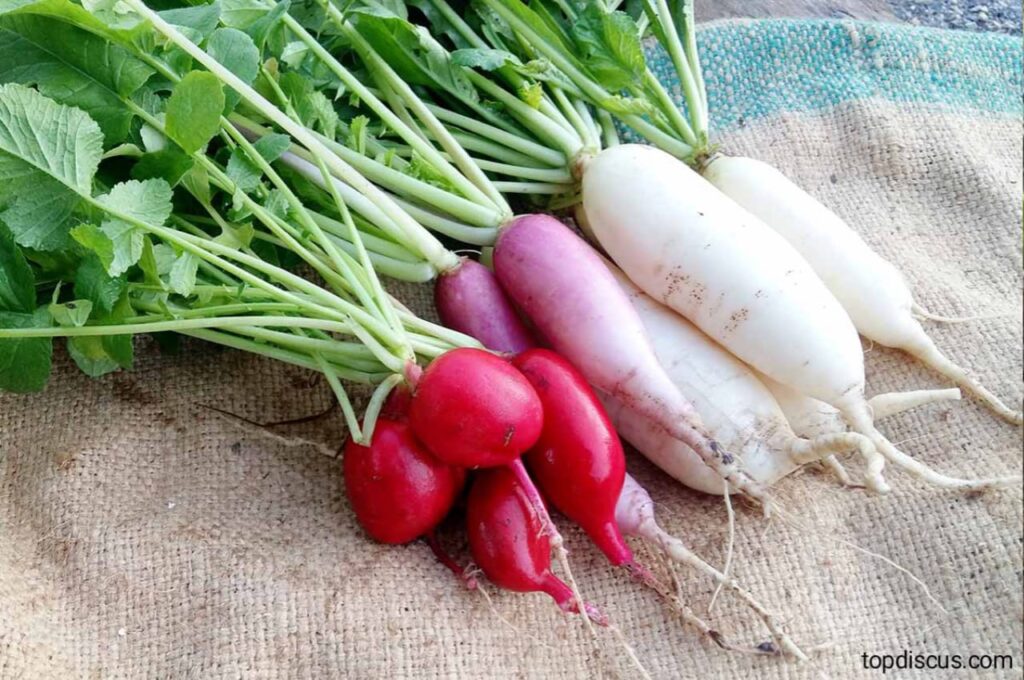 Radishes are fast-growing vegetables that can be harvested within just a few weeks of planting. They don’t require much space or special care, making them ideal for small backyard gardens. To grow radishes in spring, plant their seeds from early April to early May. For a fall crop, you can plant the seeds again from August 1 to September 1. When planting, make sure that there is at least one inch of space between each seed in a row. Smaller varieties should be planted shallowly, about one-fourth to one-half inch deep. On the other hand, larger varieties should be planted deeper, up to one inch deep.
Radishes are fast-growing vegetables that can be harvested within just a few weeks of planting. They don’t require much space or special care, making them ideal for small backyard gardens. To grow radishes in spring, plant their seeds from early April to early May. For a fall crop, you can plant the seeds again from August 1 to September 1. When planting, make sure that there is at least one inch of space between each seed in a row. Smaller varieties should be planted shallowly, about one-fourth to one-half inch deep. On the other hand, larger varieties should be planted deeper, up to one inch deep.
4. Green Beans:
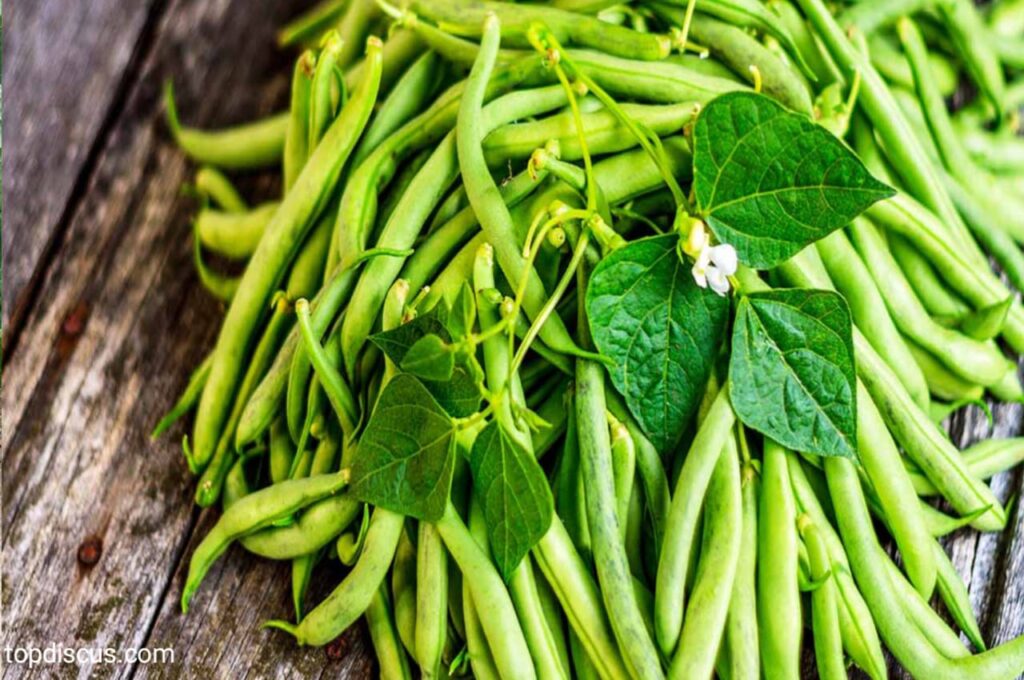 Green Beans are easy to grow and highly productive. They grow in sunlight and well-drained soil, but can also tolerate some shade. The beans are best grown in soil that is well-draining and has normal fertility. They do not require supplemental fertilizer, since they fix their nitrogen. However, if the soil is poor, it should still be amended with aged manure or compost in the fall before planting. Green beans prefer slightly acidic to neutral soil pH, which should be maintained between 6.0 and 7.0.
Green Beans are easy to grow and highly productive. They grow in sunlight and well-drained soil, but can also tolerate some shade. The beans are best grown in soil that is well-draining and has normal fertility. They do not require supplemental fertilizer, since they fix their nitrogen. However, if the soil is poor, it should still be amended with aged manure or compost in the fall before planting. Green beans prefer slightly acidic to neutral soil pH, which should be maintained between 6.0 and 7.0.
5. Carrots:
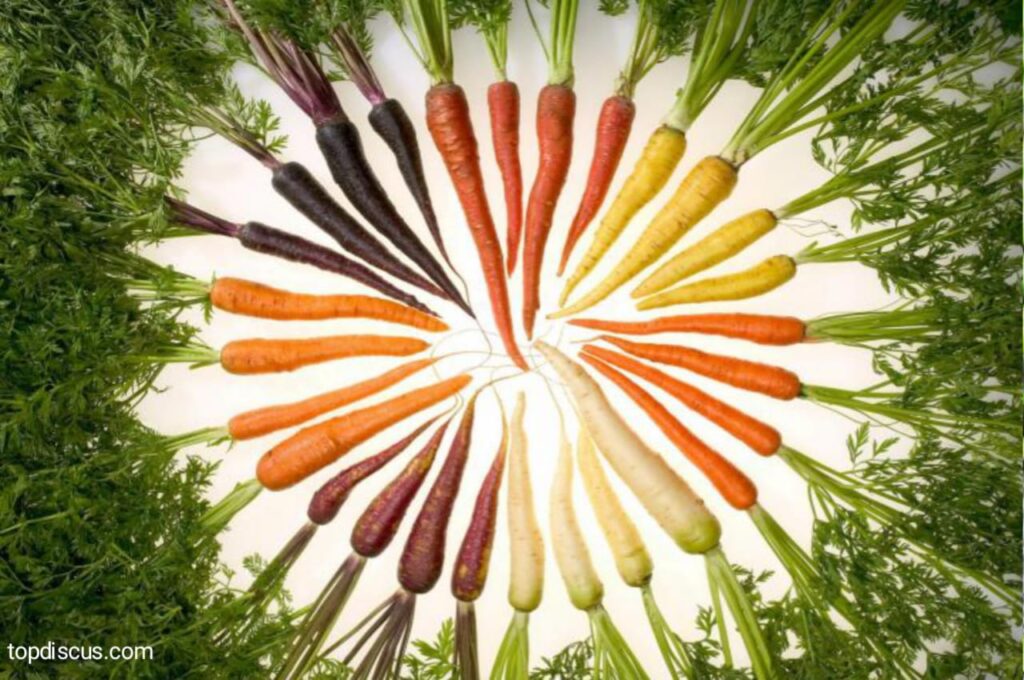 Carrots may take longer to mature compared to other vegetables on this list but they’re worth the wait! These root vegetables need loose soil free from rocks so they develop straight roots rather than becoming deformed. Carrots are root vegetables that prefer loose, well-drained soil without rocks or clumps that could hinder their growth underground. Prepare your garden bed by removing any debris or stones from the topsoil before sowing carrot seeds directly into it at a depth of about half an inch apart from each other.
Carrots may take longer to mature compared to other vegetables on this list but they’re worth the wait! These root vegetables need loose soil free from rocks so they develop straight roots rather than becoming deformed. Carrots are root vegetables that prefer loose, well-drained soil without rocks or clumps that could hinder their growth underground. Prepare your garden bed by removing any debris or stones from the topsoil before sowing carrot seeds directly into it at a depth of about half an inch apart from each other.
Try growing these five easy-to-grow vegetables in your backyard garden and see how rewarding it can be! With a little bit of effort and patience, you’ll soon have fresh produce right at your fingertips.
Tips for Maintaining a Healthy Backyard Garden:
1. Watering: Proper watering is essential for the health of your backyard garden. Ensure that you water your plants regularly, especially during hot and dry periods. Be careful not to overwater as it can lead to root damage.
2. Mulching: Applying mulch around your plants helps retain moisture in the soil and suppresses weed growth. Use organic materials like straw or wood chips as mulch to provide nutrients to the soil as they break down.
3. Pruning and Trimming: Regular pruning and trimming of plants promote healthy growth by removing dead or diseased branches and encouraging air circulation. This prevents the spread of pests and diseases in plants.
4. Pest Control: Keep an eye out for common garden pests like aphids, slugs, or snails. Use organic pest control methods such as introducing beneficial insects or using neem oil spray instead of harmful chemicals.
5. Crop Rotation: Rotate your crops each year to prevent nutrient depletion in the soil and reduce the risk of disease buildup in one area of your garden.
6. Sunlight Exposure: Make sure that all areas get enough sunlight exposure so that vegetables can grow properly without stunting their natural growth cycles due to lack of sunlight,
7. Fertilizing: Apply organic fertilizers periodically according to specific vegetable requirements. Avoid excessive use, because it could harm plant roots.
8. Weeds Control: Remove weeds promptly from backyard gardens because otherwise, they will compete with vegetables for nutrition, water & sunlight.
Maintaining a healthy backyard garden requires dedication and effort but it’s worth it when you see those fresh homegrown veggies on your plate! So roll up your sleeves, put on some gardening gloves, and enjoy reaping the rewards of growing your food right in your backyard!
“Click Here for More Related Ideas”
Choosing the Best Vegetables for Your Backyard:
Choosing the right vegetables for your backyard can be an exciting and rewarding experience. With so many options to choose from, it’s important to select varieties that are well-suited for your specific climate and growing conditions.
One factor to consider is the amount of sunlight your backyard receives. Most vegetables require at least six hours of direct sunlight each day, so be sure to choose plants that thrive in full sun if your yard is not heavily shaded.
Another consideration is the size of your garden space. If you have limited room, opt for compact or bush varieties that don’t require a lot of space to grow. Vegetables like tomatoes, peppers, and zucchini can be grown in containers on a patio or balcony if you don’t have a traditional garden plot.
It’s also important to think about what types of vegetables you and your family enjoy eating. Growing vegetables that you love will make the gardening process even more enjoyable and rewarding. Consider planting a mix of different veggies such as leafy greens like lettuce or spinach, root crops like carrots or radishes, and vine crops like cucumbers or beans.
Take into account the level of maintenance required for each vegetable variety. Some plants may need more frequent watering or additional support structures such as trellises or cages. If you’re new to gardening or have limited time available for maintenance tasks, choose low-maintenance vegetables that are easy to care for.
By carefully considering these factors when choosing which vegetables to grow in your backyard, you’ll set yourself up for success and maximize the yield from your garden. Happy planting! For More Information Click Here.
Conclusion:
In today’s fast-paced world, there is something incredibly satisfying about being able to grow your food right in the comfort of your backyard. Not only does it provide a sense of accomplishment, but it also offers numerous benefits for both you and the environment.
By taking up backyard gardening, you have the power to control what goes into your vegetables – from seed to harvest. No more worrying about harmful chemicals or pesticides, as you can choose organic methods that are safe for consumption. Plus, knowing that you’re eating fresh produce straight from your garden adds an extra level of flavor and nutrition.
There’s no denying that growing your vegetables saves money too. With rising grocery prices, having a bountiful supply of homegrown veggies can significantly reduce your food expenses. Imagine plucking ripe tomatoes off the vine or snipping crisp lettuce leaves whenever you need them – all without spending a dime!
Apart from financial savings and health benefits, cultivating a backyard garden also has positive environmental impacts. By reducing the distance between farm and table, you decrease carbon emissions associated with transporting produce across long distances. Additionally, opting for organic gardening practices contributes to healthier soil and water systems.
